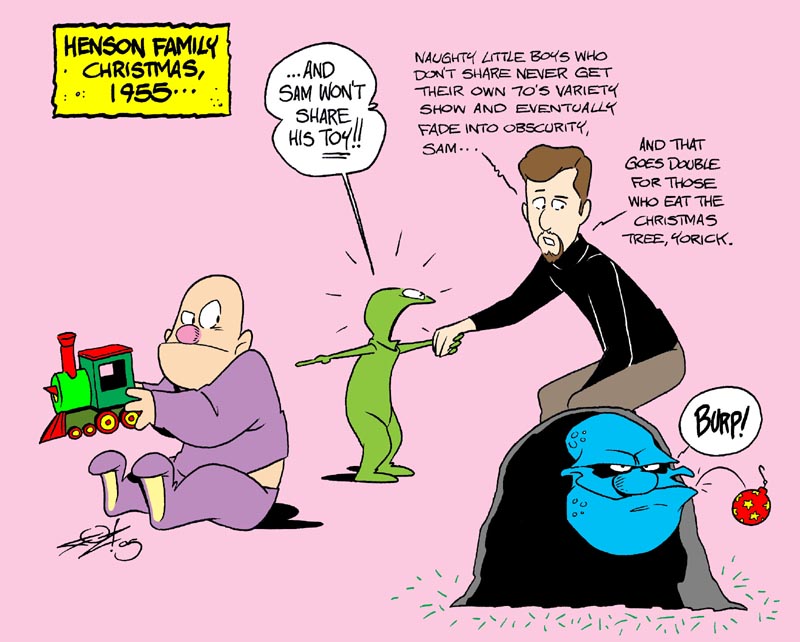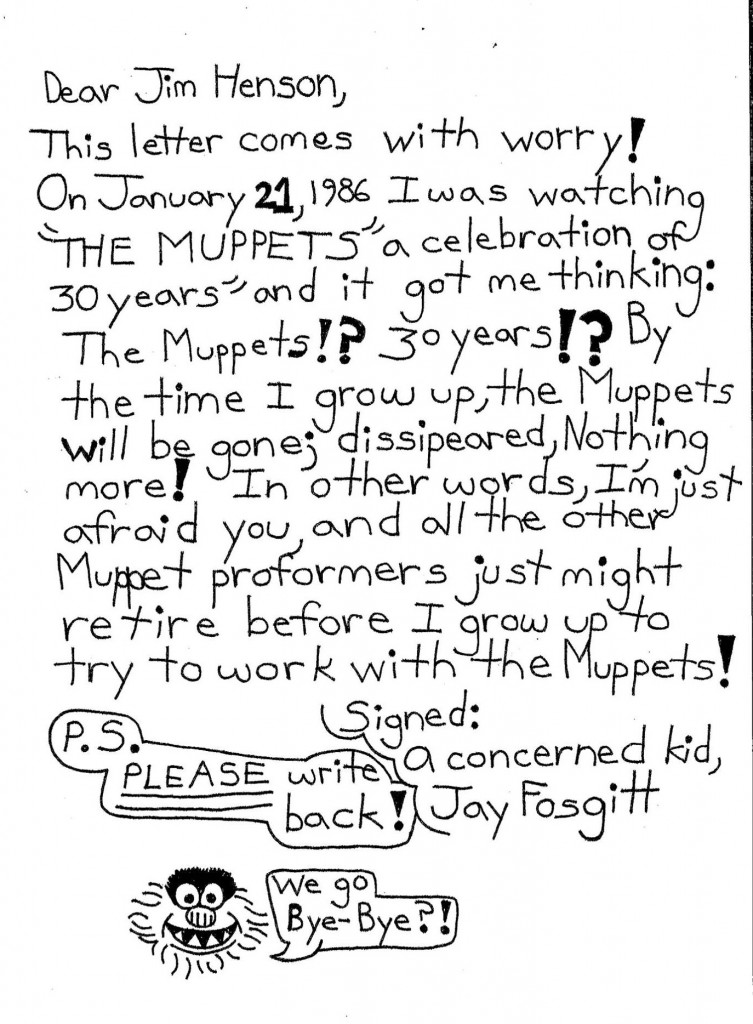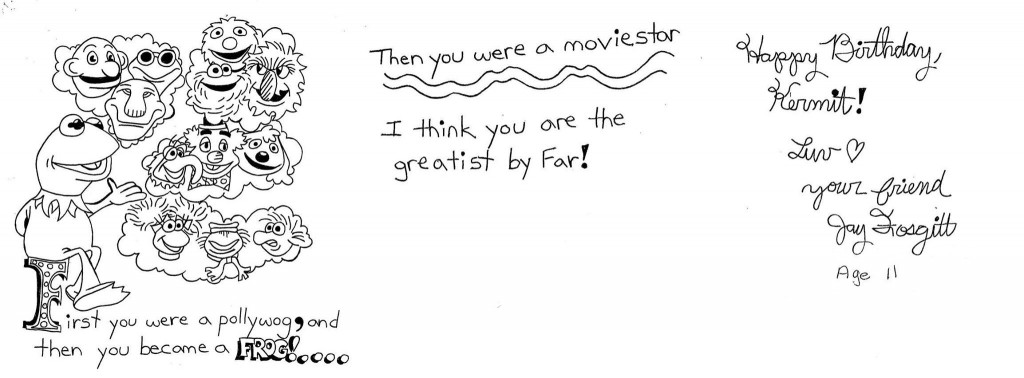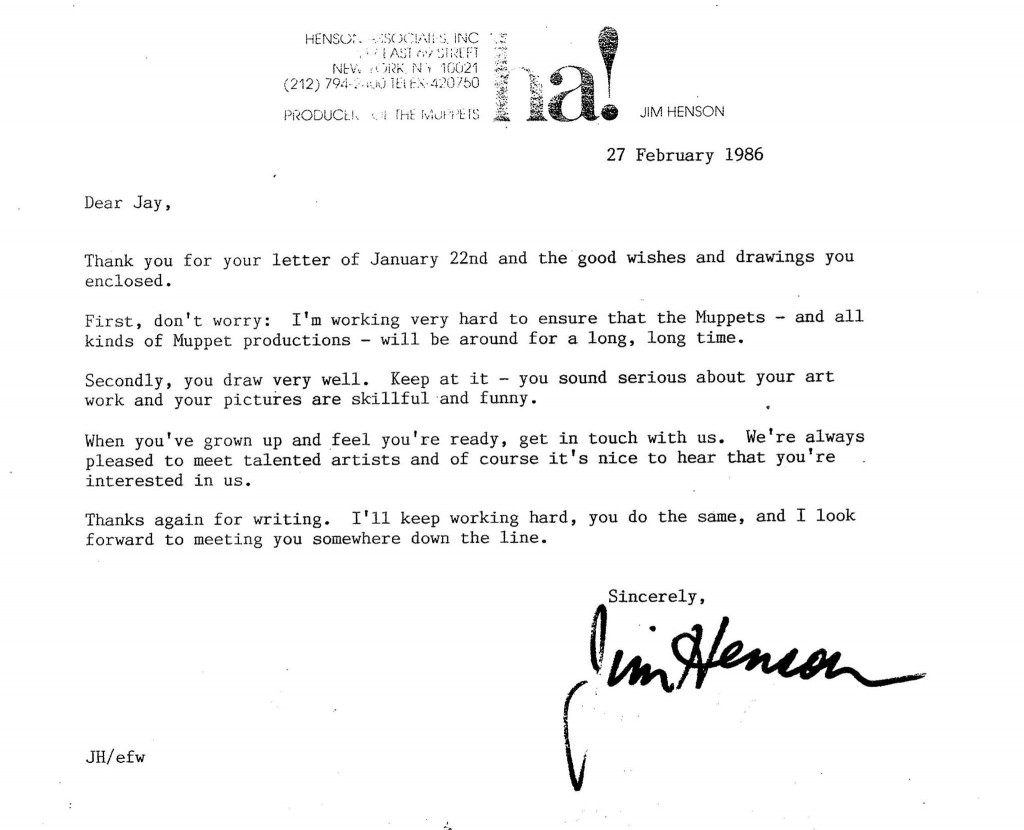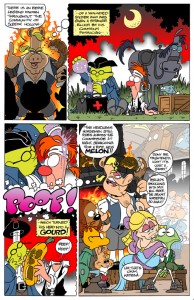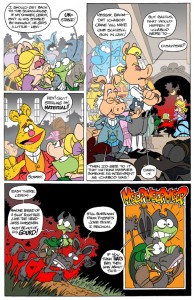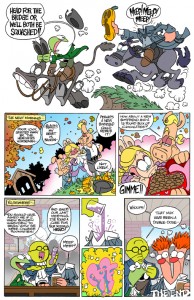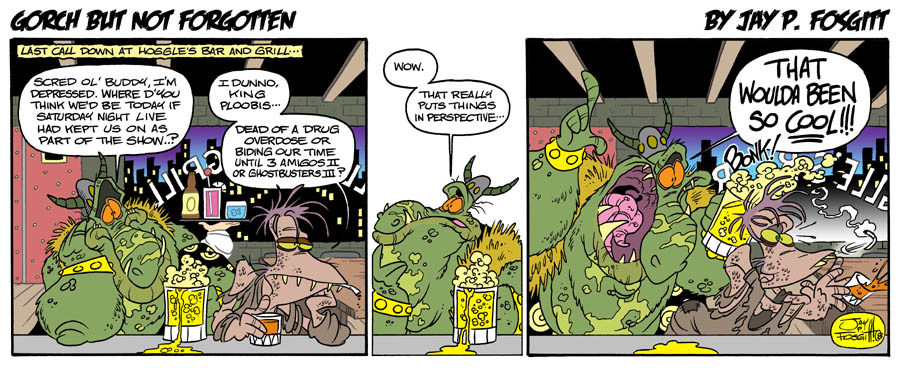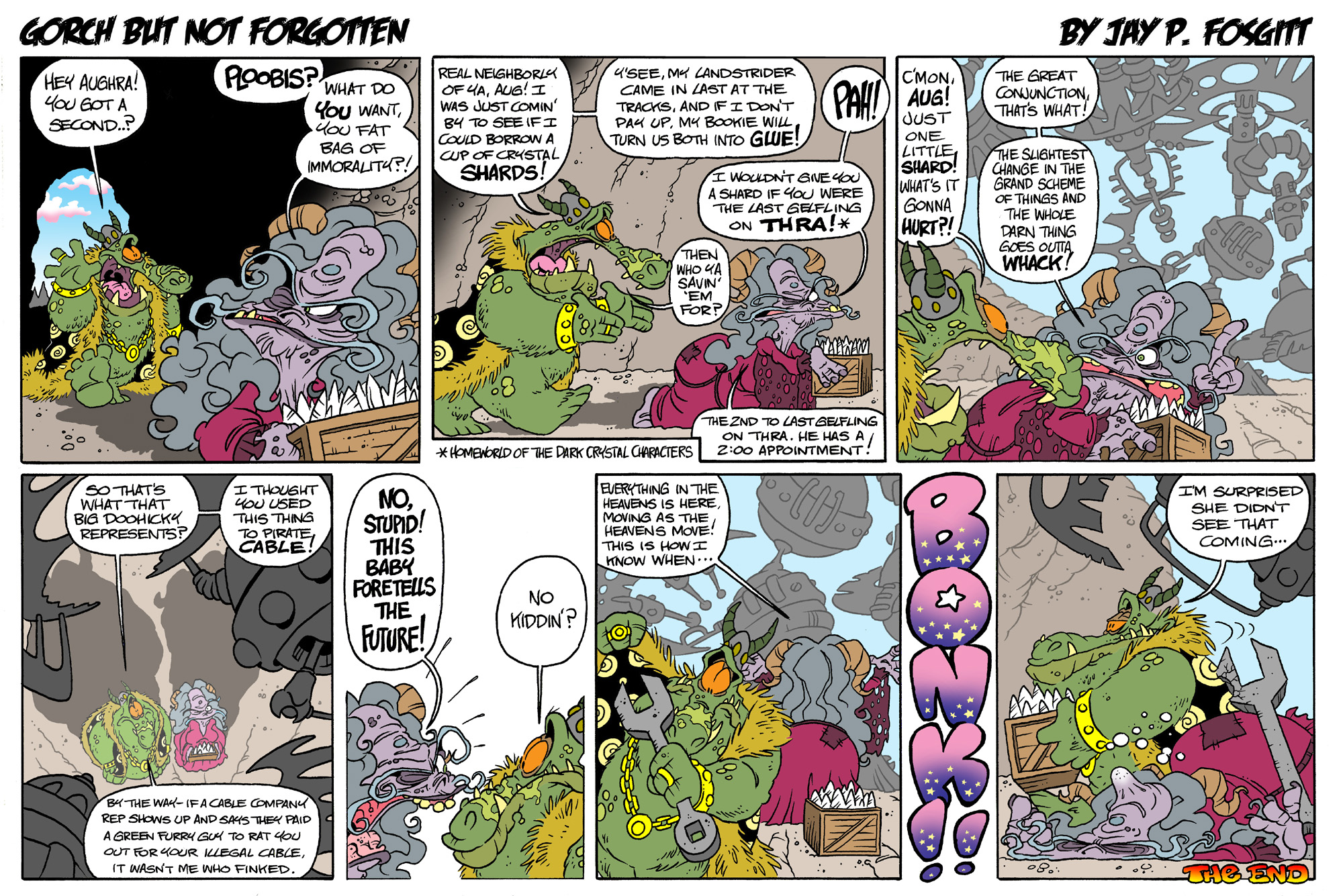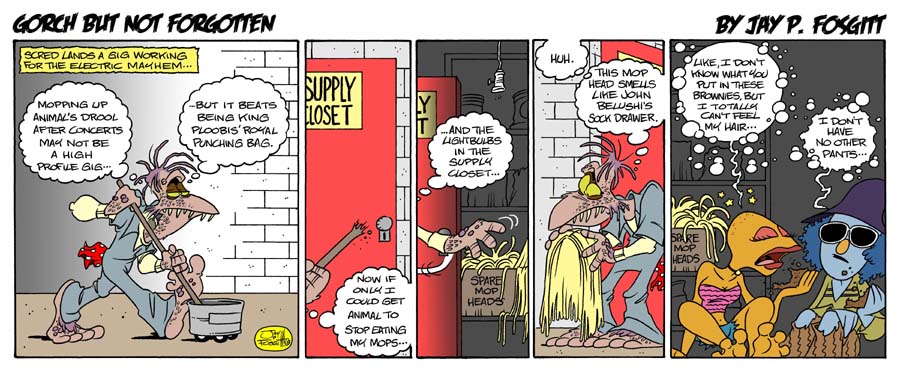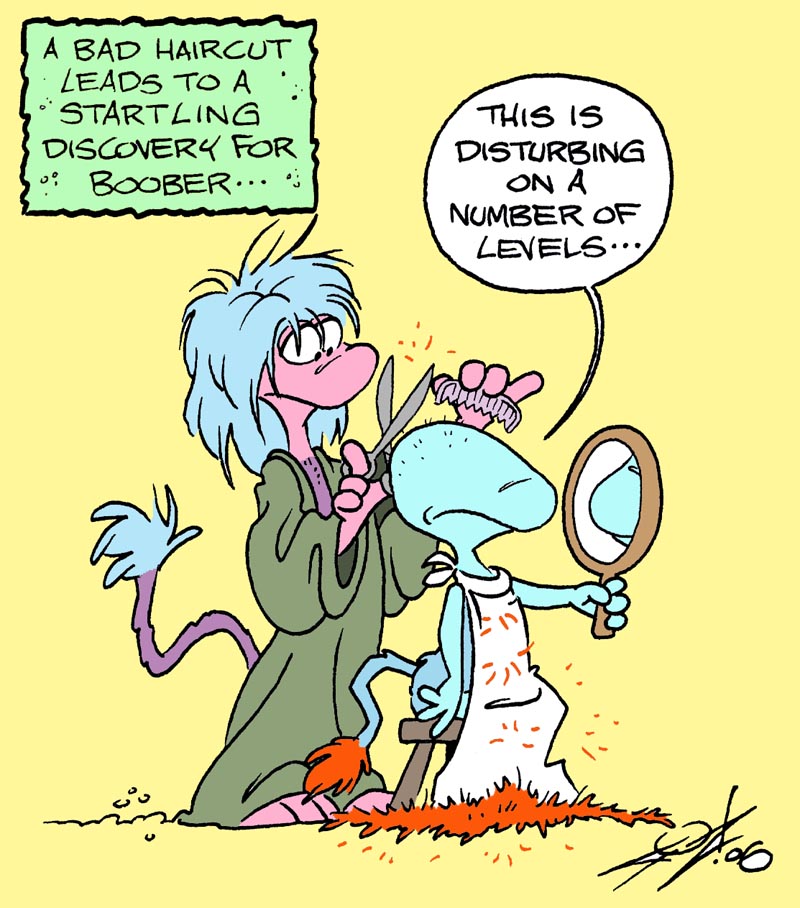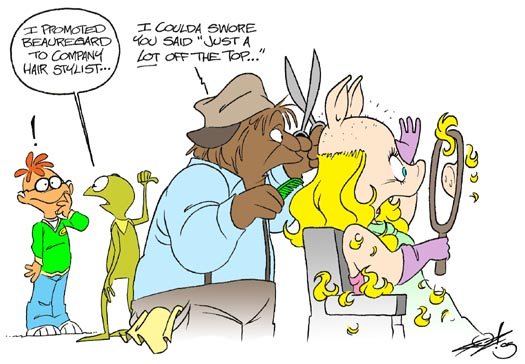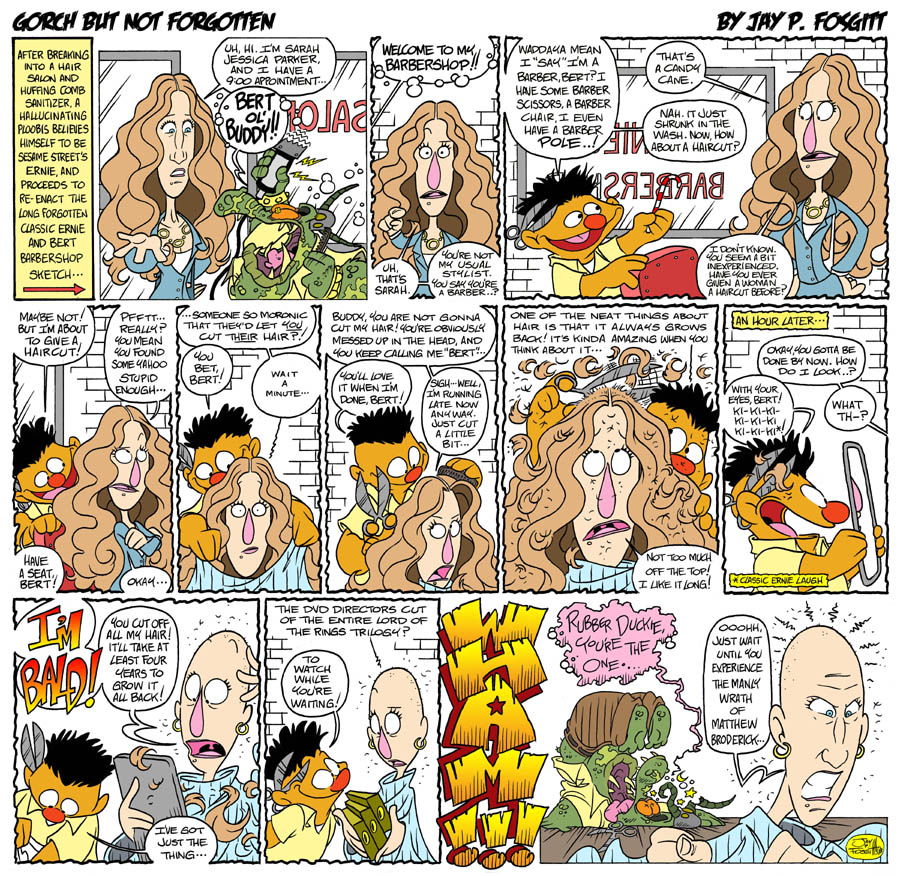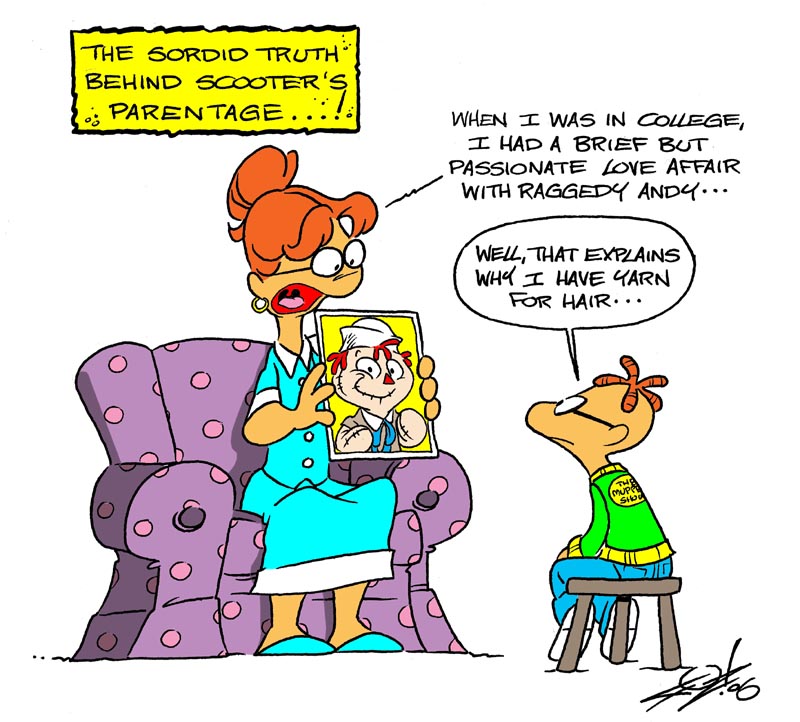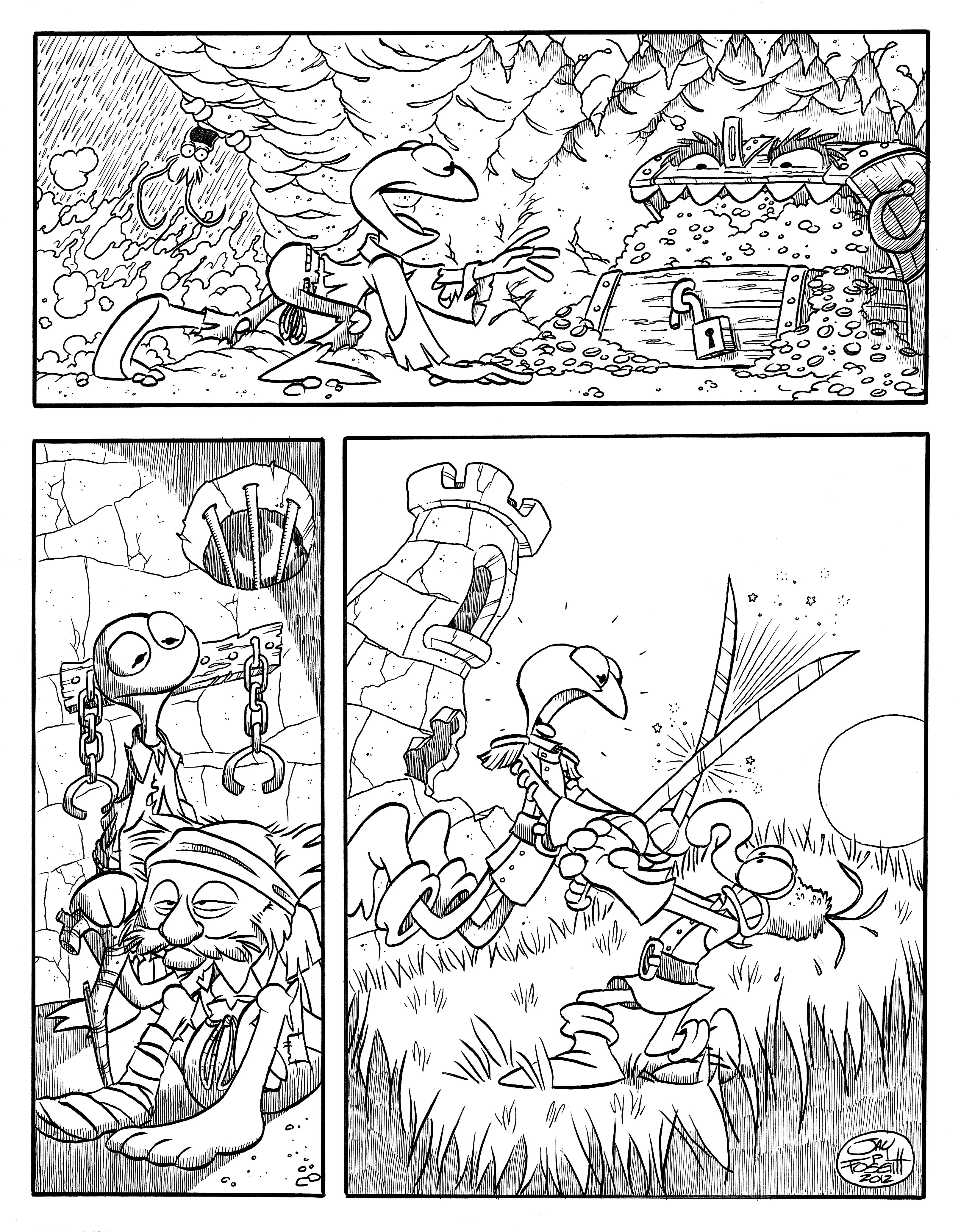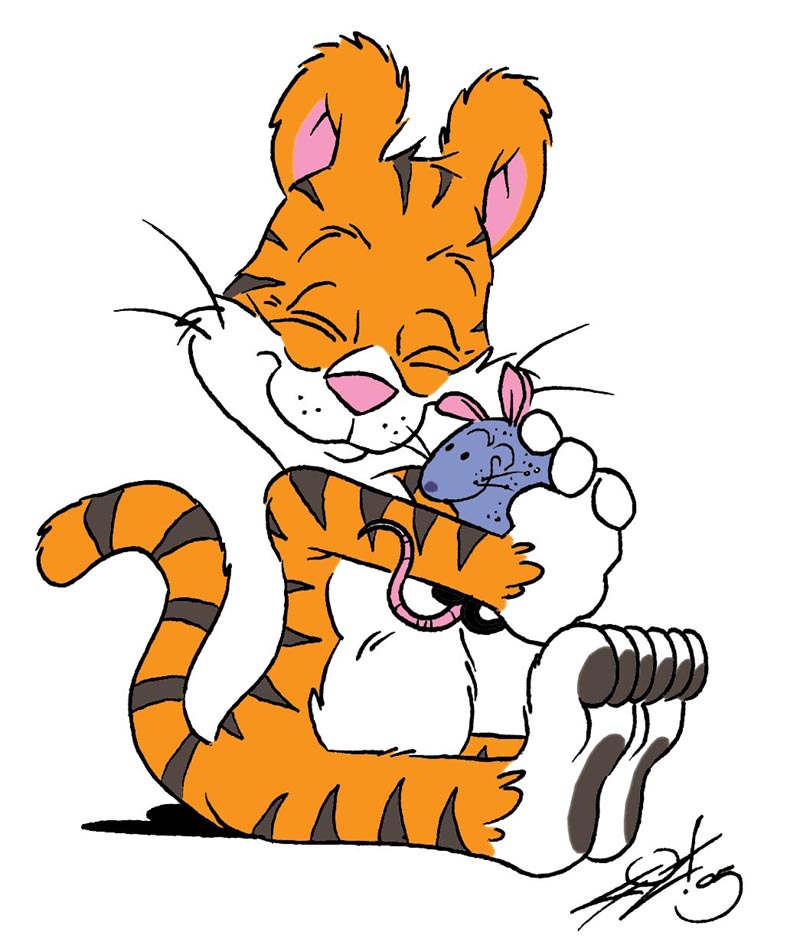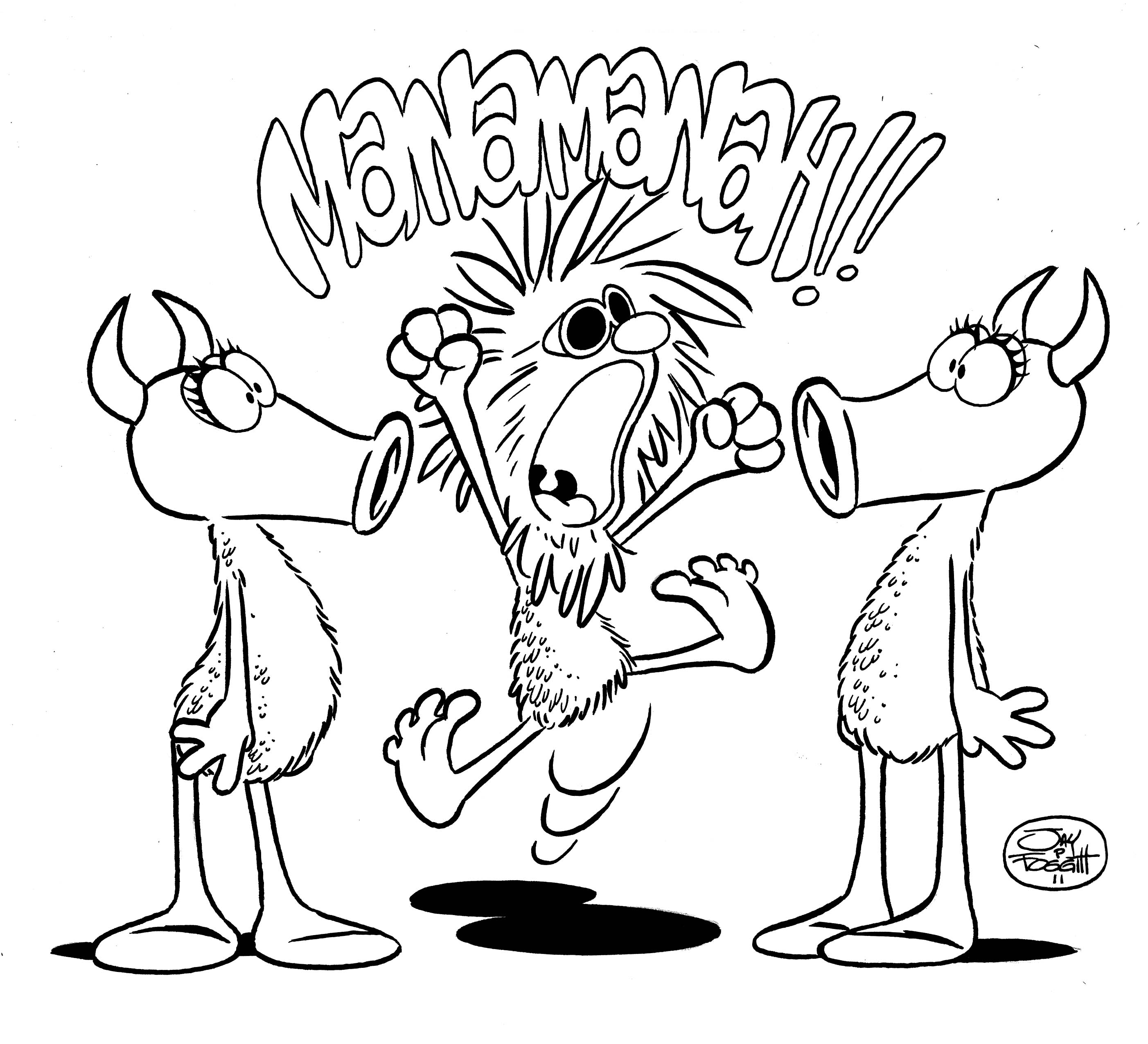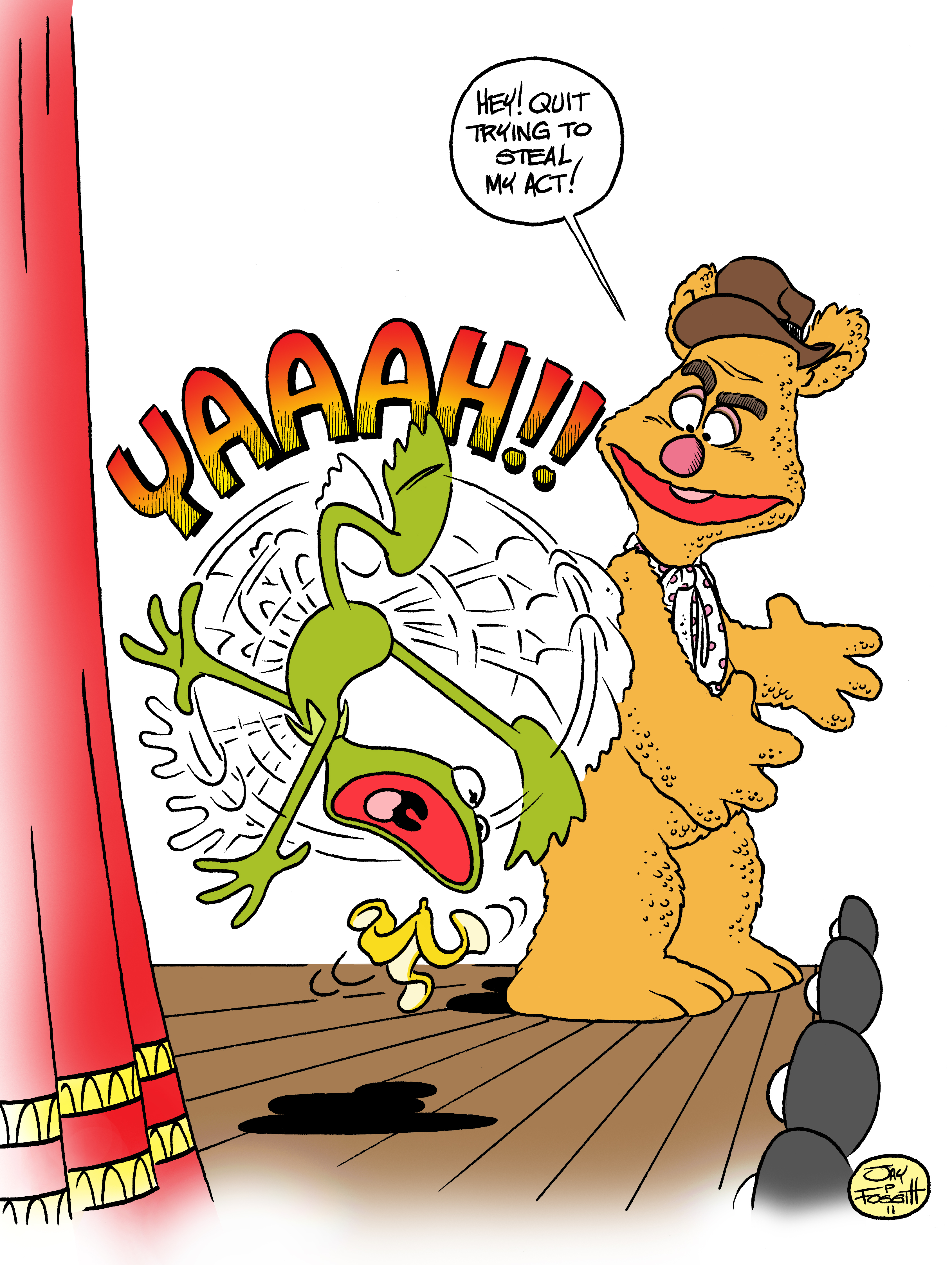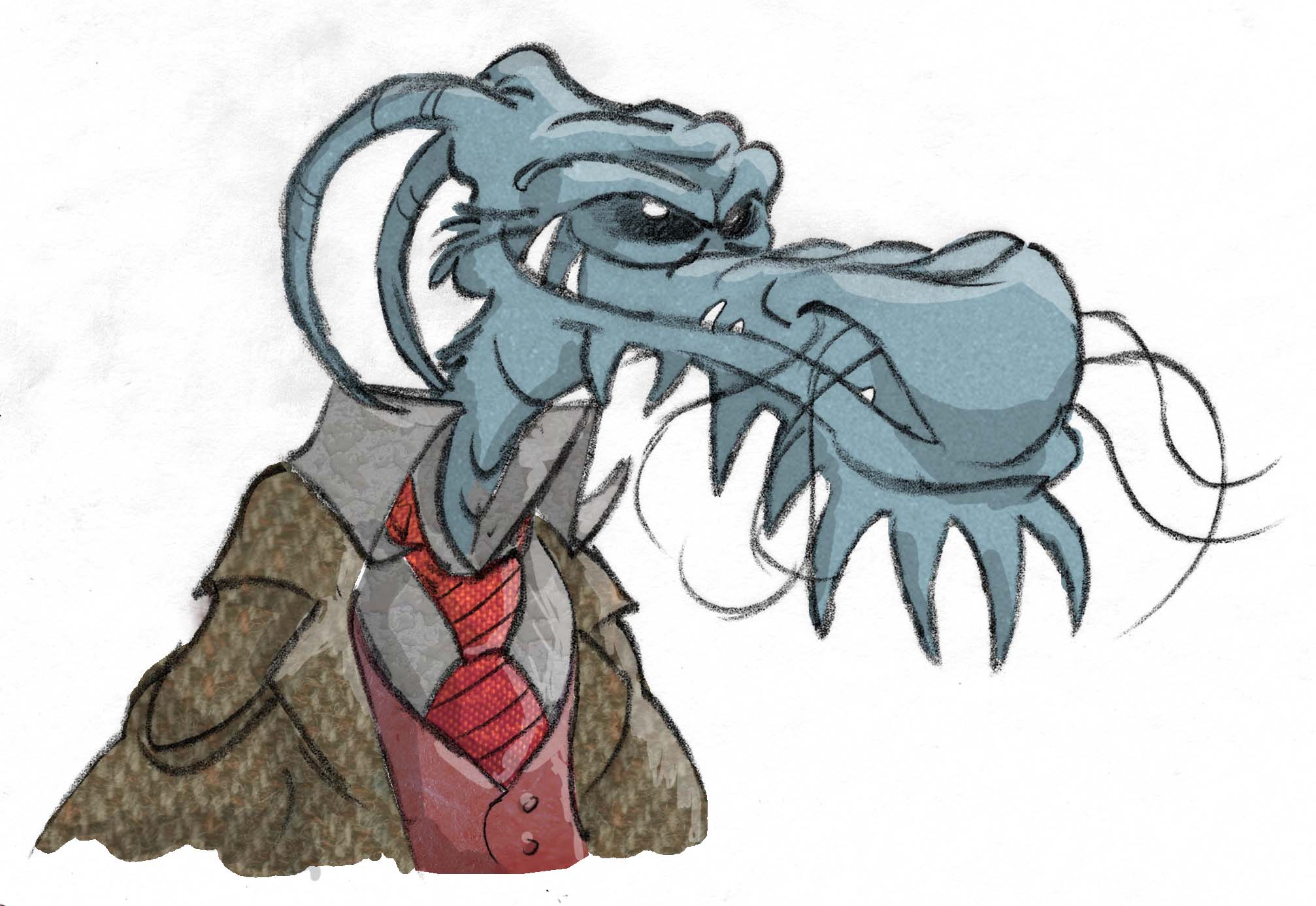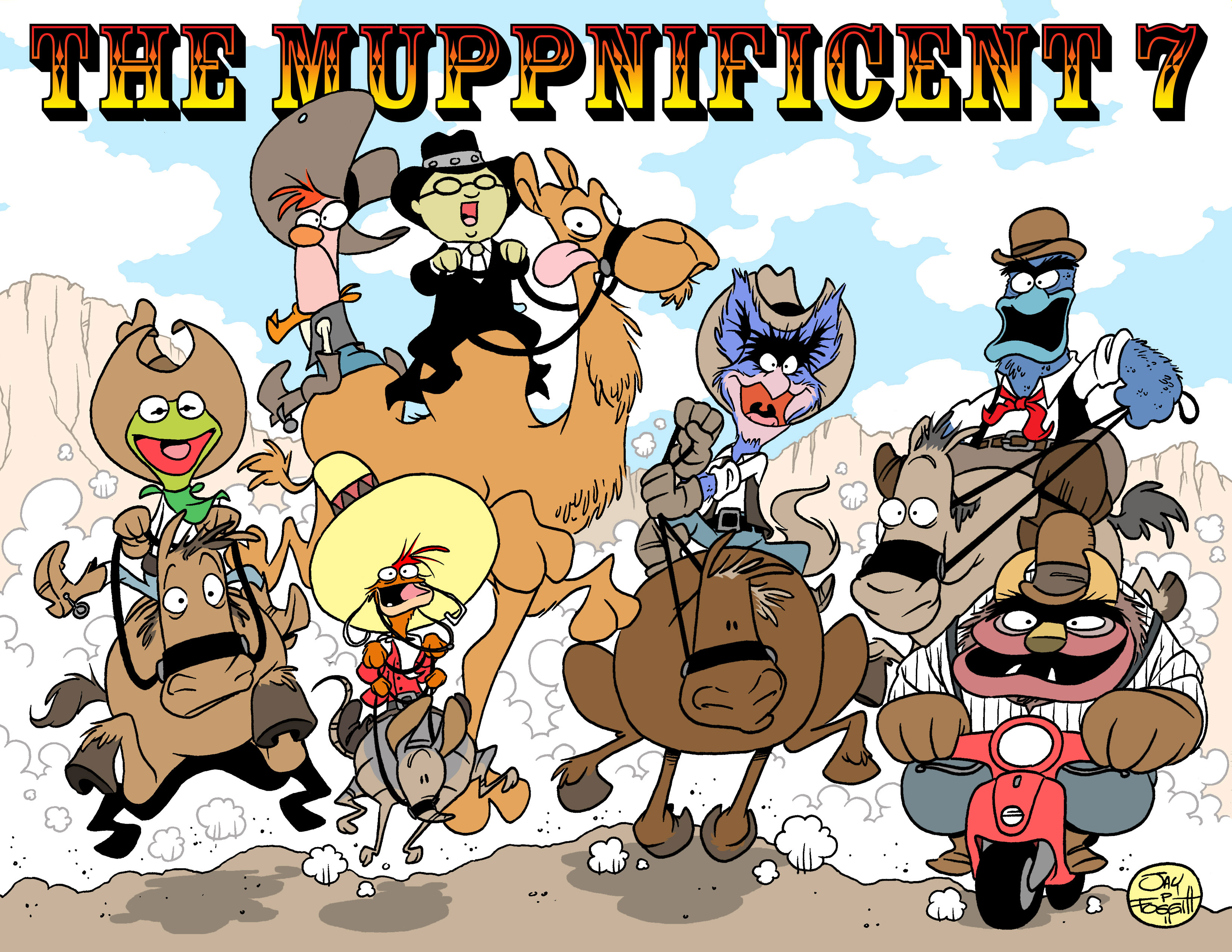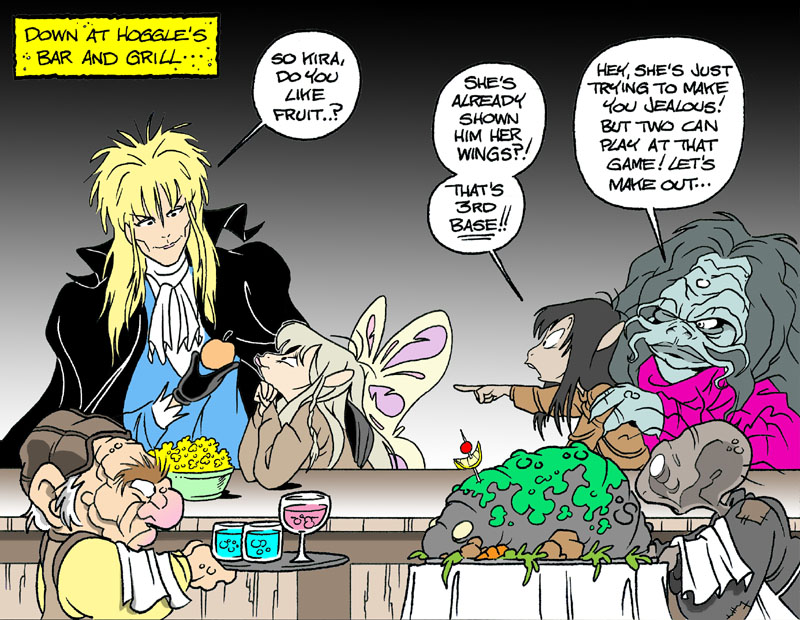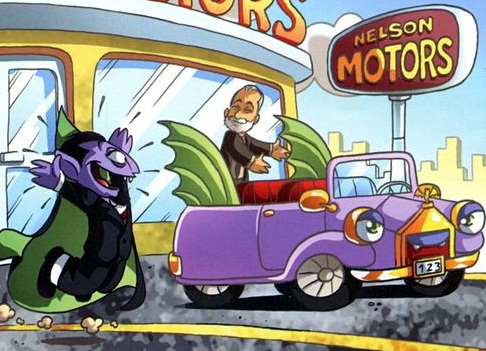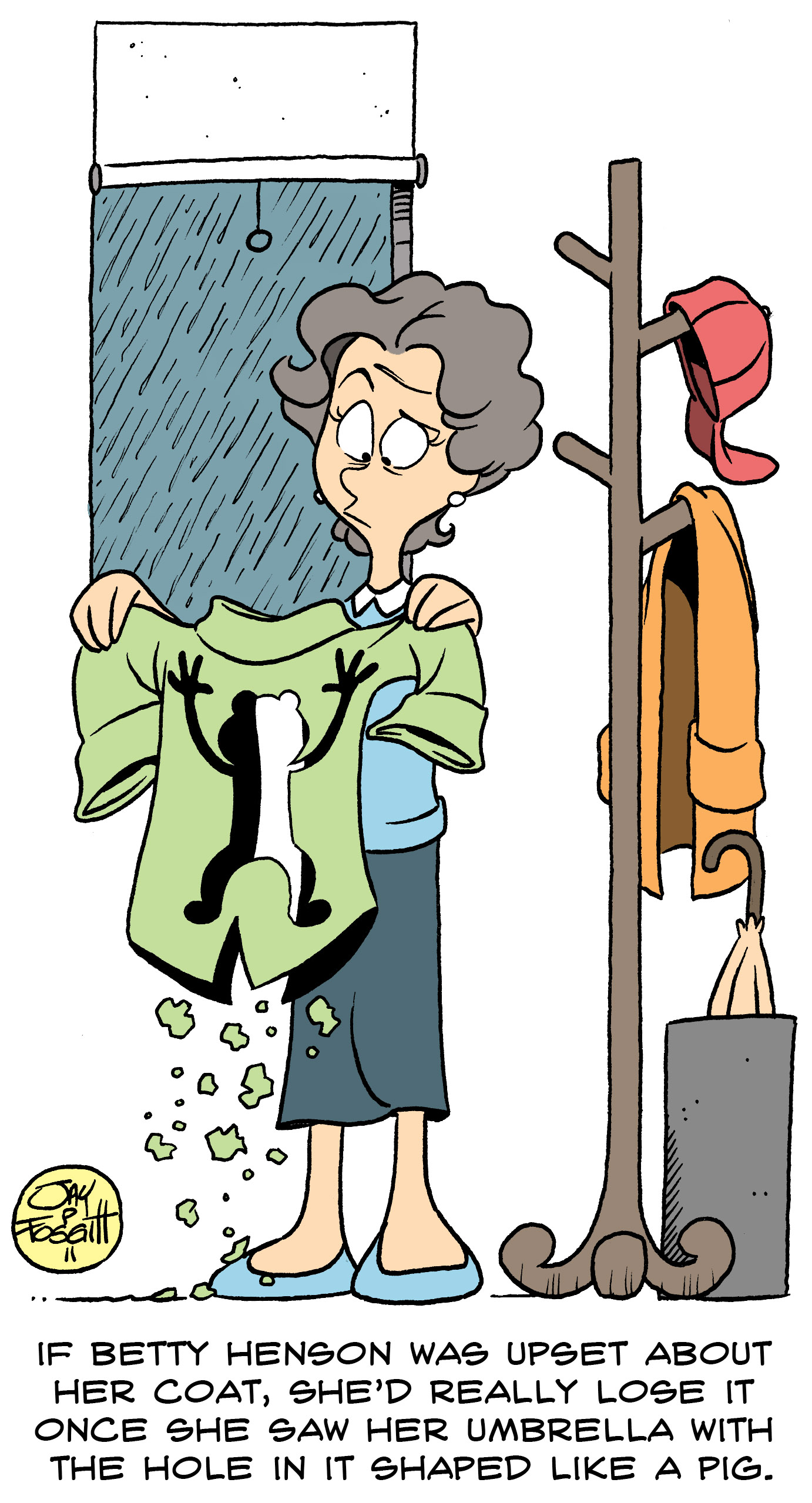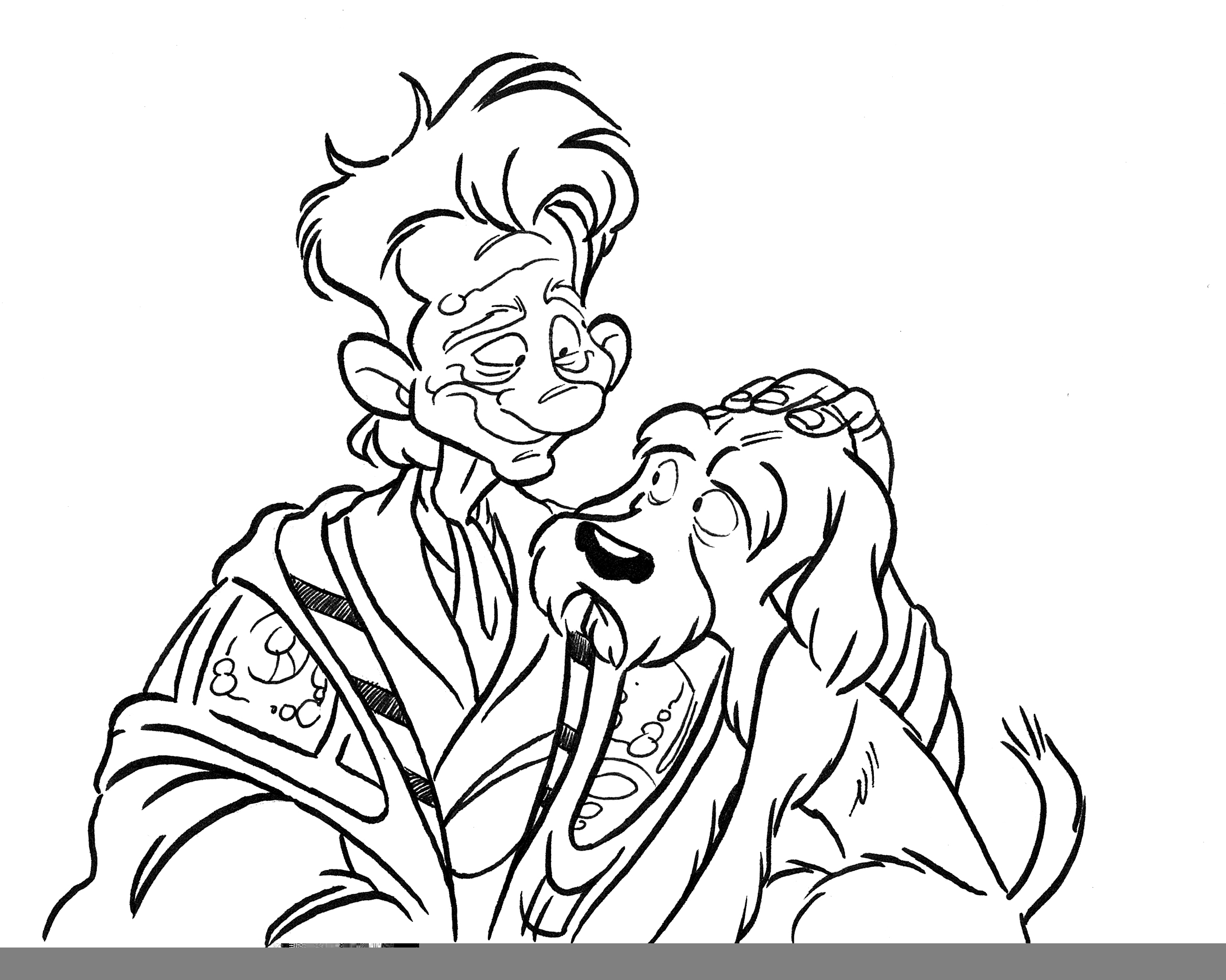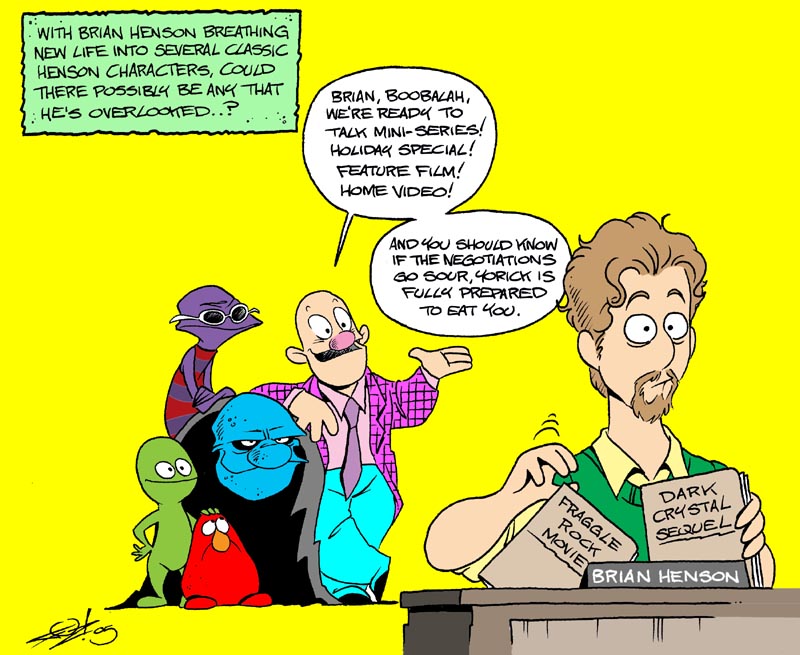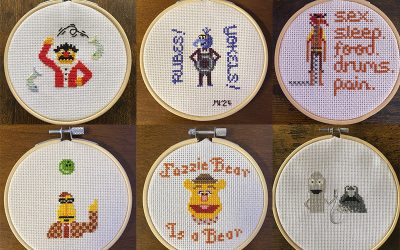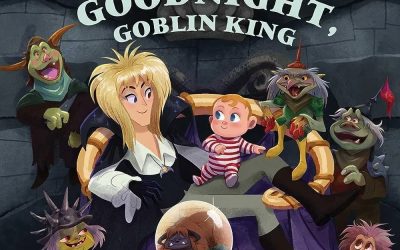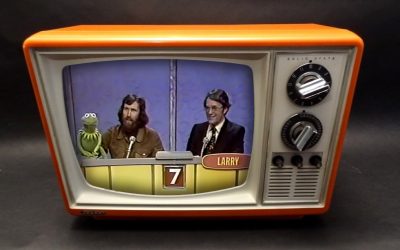As an avid Muppet Fan Artist, I’m always inspired and often jealous of my insanely talented peers. Where do they come up with their ideas? Their unique styles? Their secret techniques? I wanted to find out who the artist is behind the art, and ask questions as one illustrator to another. The following pieces of art may be pictures you’ve already seen and enjoyed, so now here’s some of the stories as to how they came to be and the creative influence Jim Henson and all his creations have on the creative industry.
Have you ever met someone and just known instantly that there’s something special about them? I’ve known Jay Fosgitt through Muppet fan sites for nearly 10 years, and his style and humor has always been a real “draw” for me… get it? DRAW for me? Well, last year I had the opportunity to actually meet Jay face to face and have managed to catch him at a few other comic cons since, and he’s just as cool in person as he is online. With the perfect amount of professional artist blended seamlessly with fandom and fart jokes, here’s some insight in to Jay.
ToughPigs: When I think “Jay Fosgitt”, I think, “incredibly unique and distinctive style”. To see such a defined and original look to art, it’s hard to believe you were inspired by anyone at all! But we know you’re a huge Muppet fan, so how does Jim Henson’s influence factor in to your incredibly creative work?
Jay Fosgitt: Jim was my creative hero from the outset, and we shared a lot of the same muses. Monsters, cute things getting blown up (in a fantasy/comedy sense, of course), music and bad puns. A lot of people notice the Jim Henson-flavor of my work, which is intentional to a degree. But mostly, Jim’s creative influence has just permeated my life and my art to the point that I don’t even have to try to reference him. Hopefully that doesn’t come across as me trying to BE Jim in my art, and hopefully I still have an original voice that’s apparent within his influence. But I proudly hold Jim up as my creative role model, always.
TP: I happen to know that for a fact! I was recently speaking with head archivist for The Jim Henson Company; Karen Falk. She told me that when you were just a little kid, you wrote Jim Henson, and he wrote back, but this story plays out even further decades later, doesn’t it?
JF: It was possibly the most epic chapter of my life, thus far, and it spanned 27 years. I’d written Jim Henson when I was eleven years old, back in ’86, saying I was a huge fan of the Muppets, and wanted to work for them when I grew up, but that I was worried that Jim would retire or close down the Henson studio before I had a chance to. I’d even sent Jim some of my Muppet art, to show how devoted a fan I was. To my absolute eleven-year-old amazement, Jim personally wrote me back. He began by telling me not to worry — that he was working hard to ensure the Muppets would be around for a long, long time. He followed by saying I drew very well, and that my pictures were skillful and funny, and that I sounded serious about my artwork. He went further, saying when I was grown up and felt I was ready, to get in touch with him, that he was always interested in meeting talented artists. And he ended the letter by saying “I look forward to meeting you somewhere down the line.” Jim signed the type-written letter in a green felt pen.
That letter meant the world to me. I held onto it and my hopes to work with Jim one day for years. When Jim passed away in 1990, I was shattered. I tried halfheartedly to contact the Henson studio at the time, but my aspirations to work for the Muppets were tempered by the loss of Jim. His letter to me was no less important, but as will happen, even the most significant possessions we have can get mislaid. The letter got lost, simple as that. To this day, my mom blames herself, convinced she accidentally threw it out with some old papers in my room, but I hold her blameless. It was another great loss, but I moved on.
Jumping ahead to 2013, my career in comic books was just beginning to blossom. My first graphic novel, “Dead Duck”, had come out four years earlier, and had gained me some notoriety in pro–cartooning circles, and my new all–ages comic, “Bodie Troll”, had just been released and was getting some positive buzz. But during all these new developments, I was in the middle of a separation from my wife, which dampened my accomplishments and threw everything into uncertainty in my life. And it’s in moments like that that the most unexpected things tend to pop up.
Karen Falk, whom I knew as the archivist for the Henson Company but had never met nor corresponded with, e-mailed me out of the blue. In Jim’s files, she said, she had found the original letter I had written Jim back in ’86, which Jim had held onto. She also found a photocopy of Jim’s letter to me. Karen said she’d read our correspondences, and was curious to see if I’d grown up to pursue professional cartooning, as Jim had encouraged. She Googled my name, and saw that I had, in fact, achieved that dream. This inspired her to reach me, and to send me scans of both my letter and Jim’s letter.
Karen gave me so much with her e-mail—she gave me my fondest childhood memory back, she gave my life’s pursuit validation, and she gave me back my hero. It was like Jim knew I needed him in a very difficult time in my life, and showed up at my most desperate hour. And as great as anything else, I’ve gained a great friend in Karen, who I’ve happily remained in contact with. I got to visit her at the Henson studio in Queens last October — another lifelong dream come true — where, among the puppets and archived material, she showed me the original correspondences between me and Jim.
TP: I want to get to Bodie in a bit, but let’s talk about almost working with the Muppets in a way. When Boom Comics was doing The Muppet Show comics, you sent them a great story of the Muppets in Washington Irving’s Sleepy Hollow. I’ve had several conversations with fans about how surprised we were that Disney thought your concepts were too cartoony, ultimately passing on your submission. I’ve got several questions about this, but first off, where did the inspiration for putting the Muppets in a macabre American folktale come from? And how did you come to cast each character in to their respective and off beat parts?
JF: I had been in touch with Aaron Sparrow, who was editing the Muppet comics at Boom. I’d keep on him with samples of my Muppet-themed art to prove that I could do a good job working on the Muppets. Aaron was always positive about my samples, but he did come back to me at one point, saying that Disney thought my style was too cartoony for the Muppets. That was a head-scratcher. I took it as code that Disney thought my work was too off-model, which didn’t help my confusion. Roger Langridge, who drew the Muppet Show comic, had his own style for drawing them that was pretty off-model, and Disney seemed cool with that.
When the Muppet comics spun off into adapting fairy tales, I decided to be proactive and wrote and drew my own pitch. I went with “The Legend of Sleepy Hollow” mostly because it’s one of my favorite stories, and it wasn’t an obvious choice for a parody due to its darkness, which would make the humor that much more absurd.
I thrive in pop culture mash-ups, so connecting specific Muppets to Washington Irving’s characters was easy and fun to do. I tried to go with less obvious Muppets in the roles, but some, like Kermit and Piggy as Ichabod and Katrina, were too perfectly matched to avoid. Beaker as the Headless Horseman was my number one choice, because having the least threatening Muppet as this malevolent villain is just comedy gold, in my opinion. My favorite idea was having Leroy the Donkey from “The Muppet Musicans of Bremen” fill in for Ichabod Crane’s old horse, Gun Powder. That was such a good fit, though I wasn’t even sure Leroy fell under Disney ownership. I managed to cram the whole thing into three pages, which I wrote, drew, lettered and colored, giving Aaron and Disney a complete package to consider. Aaron was enthusiastic, and showed it to Disney. Communication slowly petered out, and the last thing I’d heard from Aaron was that Disney supposedly had their own idea for “Muppet Sleepy Hollow”, but that this piece put me on their radar if it happened. But before you knew it, Boom lost the Muppets license, and other than a reprint of some of Langridge’s Muppet comics through Marvel, there hasn’t been any new ones. I still hope to write and draw Muppet comics someday. And I’d love a chance to do “Muppet Sleepy Hollow” on a bigger scale.
TP: I smell a Kickstarter campaign! Anyway, you’re certainly well familiar with making Muppet/Henson related comics. Tell me a bit about your strip “Gorch But Not Forgotten”.
JF: My Muppet fandom exceeds the popular characters and goes deep into the obscure characters. And there are few as obscure as those from the “Land of Gorch”. Around 2008, I got this idea to create a comic strip around these characters, just for something fun to do on the side, which I called “Gorch But Not Forgotten”. I wanted the storyline to show what happened to Ploobis and his crew in the years following their expulsion from Saturday Night Live—a seedier, washed up existence where Ploobis and Scred are now roommates, and pulling cons and concocting schemes to coast by on their Muppet notoriety. I created a small handful of strips, usually where the Gorch gang interacted with other lesser known Muppet characters, like the Emmet Otter gang, or the Beautiful Day monster. In a couple instances, I did inject more recognizable characters in there, like Janice and Zoot, because they fit the gag I had in mind. I wanted to avoid throwing Kermit in there, for example, or any mainstream Muppet just for the sake of it. The only characters I used were ones that served that particular gag.
The last one I did was a Sunday-sized strip, showing Ploobis interacting with Aughra from “The Dark Crystal”, and suggesting they were neighbors. That may have been my strongest overall strip in gag and design. At one point, I was encouraged to pitch the strip to Archaia comics, who had just landed the Henson license. There were a few murmurs of interest, but it ultimately came to nothing. I don’t think my Gorch strip was mainstream enough to be a successful comic book, and I liberally borrowed characters from the Henson, Sesame Workshop and Disney camps, which would have been a logistical nightmare to untangle the rights. But I would still love to do something with these characters in an officially licensed capacity someday, perhaps in a more all-ages format. No matter the situation, I’m confident I could do something fun with them, because they characters are already so wonderful to begin with.
TP: Okay, this will be a unique segue, but speaking of that one appearance of Janice and Zoot, it shares a rather common theme found in a lot of your humor. This is something I’ve been wanting to ask for a long time… why so many shaved head gags?!
JF: The short answer is that I’m lazy, and frequently fall back on my two stock gags—haircuts and poop (farts being a subcategory)—when I can’t think of anything better. The long answer is…well…longer.
The haircut gag is an old pop culture trope that I grew up with, particularly in the Muppets—Sesame Street used it a few times, as did the Muppet Show and Fraggle Rock—and in cartoons ranging from Rocky and Bullwinkle, Bugs Bunny, Woody Woodpecker… the list is lengthy. For the same reasons that I use more familiar tropes like cartoon violence, inebriation, and bodily functions, I use the haircut gag. But more than those other stock gags, I’ve been able to come up with fresh takes on haircut gags every time. It’s a curse, in a way. If I could come up with fresh takes on dynamite sticks and anvils as Chuck Jones and Tex Avery did, we wouldn’t be having this conversation, and I’d be overusing THOSE tropes.
And though it’s not exclusive—a variety of characters of both sexes have been bald in my stories—more often than not, it’s bald women that you see in my work. That is a more conscious choice. I have the same attraction to women that a lot of people do. But unlike a regrettably large amount of people, I include bald women in the category of whom I find attractive, as well as women of ALL hairstyles and character traits. When I drew my comic “Dead Duck”, nobody questioned when I drew a voluptuous female character, and it happened in almost every story. But whenever I draw a bald woman, be it in a haircut gag or just as a character design choice, it inevitably raises eyebrows. There’s a societal stigma towards bald women that frustrates me to no end. Any women who shave their heads as a purely stylistic choice get scrutinized, with very few exceptions. To me, it’s another side of body shaming, and it’s just as wrong. Nobody would tell a woman who lost her hair because of sickness that she was unattractive. So I often include bald women in my stories, not as a political statement, but because I think they’re attractive, they fit in well when I employ my haircut gags, and ultimately, because I can.
In fact, I’ve just introduced a bald female character into “Bodie Troll”—she’s a tribal monster hunter named Hokum, and a very strong and compelling character. She’s a lot of fun to write and draw (her tattoos and weaponry were a blast to design), and I’m very proud to have her become a regular player in “Bodie Troll”. Some advanced reviews of her first appearance have been very favorable, and I think she’ll be a popular addition. Certainly, she’ll stick around for as long as I continue to draw “Bodie Troll”, which will hopefully have the same longevity as my haircut gags, which show no signs of drying up anytime soon!
TP: I’ve often said there’s not enough fart humor in art. For a brief time, I contemplated condensing the word fan art to just “fart.” It didn’t take. But beautiful women with shaved heads and gaseous trolls aside, let’s talk Bodie.
It’s very clear that you are an incredibly artistic person, and when I see you at comic conventions, you are able to show off your new Bodie Troll puppet! He looks fantastic! I would ask if you did not have art, what would your creative outlet be, but it’s clear that puppetry is an interest also. What traits does Bodie have that would make a good argument to make him an official family member to the Muppets?
JF: If I weren’t involved in art, I would be a fiction writer. I’ve been doing it as long as I have been drawing, and though it takes that much more effort to write something I’m happy with than it does to draw something I’m happy with, I have a love for it, and aptitude for it, and it would be a natural path for me. Aside from “My Little Pony”, I have written all the comics I’ve drawn, so in that regard, I already am a writer. Acting and puppeteering are other paths I could embark upon, and I’ve had training and experience in both. Acting in particular, especially for a live audience, is the biggest high I’ve ever experienced.
As a character, Bodie gels with the Muppets very well. His gruff exterior and his soft interior mirror characters like Oscar the Grouch, who wants to be seen as rotten, but genuinely cares for those around him. Bodie’s penchant for physical comedy (usually unintentional) and his exaggerated reactions to things are very Muppety. Physically, the Muppet connections are endless. Bodie has the black, soulful eyes of Bean Bunny, the toothy grin of Animal, the animal characteristics of a resident of Frogtown Hollow from “Emmet Otter” and a tail that any Fraggle could identify with and be proud of. And if such an opportunity to have Bodie meet the Muppets were to surface, I would nominate my friend and talented puppeteer and builder James Wojtal to perform Bodie.
TP: Your humor and illustrative style fit very nicely in creating fantastic Muppet art and gags. That being said, you’re still interpreting well known characters. Do you ever find any creative conflict when applying your unique look to such iconic figures, and do you ever struggle with any Muppet in particular? (In other words, is one character in particular harder to draw than the rest?)
JF: I try to avoid drawing a character 100% on model if I can avoid it, and instead find a balance between character familiarity and my own style. Like drawing Muppets—I hit the key design points of the characters—Kermit’s eyes and collar, for example—but then think more in terms of animation when drawing them. If I were an artist who drew more literally from life, it would be different. But being a cartoonist, I feel compelled to do more exaggeration, and to add details that the puppets don’t have to heighten facial expressions, like giving Piggy an eye brow to arch in suspicion, or allowing Kermit’s eyes to dart to the left for a sideways glance. I actively avoid doing literal interpretations of established characters, mostly because anyone can follow a model sheet and draw it in the established style. If you’re an artist and not infusing your style into these already recognizable characters, then what’s the point of drawing them?
The exception to this rule is when I’m paid to draw licensed characters by the companies that own them. I worked on the Popeye license recently, and even though the assignment was to draw Wimpy as a hipster, I was given a very specific model sheet to work from, and had to nail every contour of Wimpy’s crab walking, snowman body. But with my work on the “My Little Pony” comic, I’ve been given a free hand to draw the ponies as I do the Muppets—character familiarity, but in my style. it’s been wonderful. As far as I can tell, I’m the only artist on the series who gives the ponies eyebrows, for better range of expression.
And I certainly do struggle with drawing certain Muppets. The Beautiful Day Monster is one of my favorite characters, but a big challenge. His mouth/nose are a subtle distinction, and I try to avoid giving him a big ol’ schnozz and treat it more as a mouth with a pronounced upper lip. It’s a careful balance, and I don’t think I’ve ever nailed it to my satisfaction.
TP: Do have a favorite Muppet to draw then?
JF: Gonzo is a favorite, and his bug eyes and hooked schnozz fit my design aesthetic perfectly. Certainly the Gorch characters are favorites to draw for me, particularly Ploobis and Vazh—love their designs. And Kira and Aughra from “The Dark Crystal”—Kira’s design is absolute beauty, like a butterfly or a ballerina, and it’s a joy to try and recreate that in my style. Aughra is on the opposite end of that design spectrum—all squat, lumpy and gnarled, and just as much a joy to create for all those reasons.
TP: Going back a bit, while your Muppet comic didn’t go through, your Sesame Street comic did. What can you tell me about that and the awesomely sweet Jerry Nelson tribute you tucked in to it?
JF: At the time, I was already writing and drawing some comic titles at Ape Entertainment that the company had developed. The publishers didn’t even tell me right away that they landed the Sesame Street license—I had to find out through the comic industry grapevine. After that, I pleaded my case like Atticus Finch, telling Ape that I was the guy to put on the Sesame Street comic, not just because I knew could draw them, but because of my lifelong passion, familiarity and personal contact with the Henson company. The publishers eventually put me on the book (which sadly only managed to put out one issue), and had me write and draw a few one-page gags for the comic. The Jerry Nelson one was my first, and definitely my favorite. For those who haven’t seen it, I was told to draw a comic involving any Sesame Street character and the concept of imagination. So I had The Count on a park bench, daydreaming about numbers turning into the different parts of a car, then coming together to form a complete hot rod which The Count bought at a car lot and drove away in as he laughed madly. I decided to make the auto dealership “Nelson Motors”, after the great Jerry Nelson. I even drew Jerry as the car salesman. Just a few months before Jerry passed away, he started following me on Twitter. That meant a lot to me , particularly once he was gone, so I felt an extra sense of purpose in making my Count comic a nice love letter to Jerry.
TP: You’ve certainly had a fan’s dream journey with your connections to Henson so far, but let’s pretend you’re suddenly given unlimited access and resources for your personal Muppet dream job. What would you do?
JF: I would create a brand new project for the Henson company to produce, ideally a movie or anthology series like “The Storyteller”. I’d design the characters, write the script, and be one of the performers in the show, though not necessarily the main character—a goofy sidekick type, like Gonzo in “Great Muppet Caper” or Pepe in “Muppets From Space” would suit me fine. Just getting to see my creations brought to life through the builders and puppeteers that I’ve admired for so many years, that would be the top of the mountain for me.
Stay up to date with everything Jay at:
- JayFosgitt.com
- Jay’s Deviant Art page
- Bodie Troll’s Facebook page
- Jay’s Pinterest page
- Jay on Instagram
- Jay on Twitter
Click here to book a round-trip ticket to Gorch on the ToughPigs forum!
by Dave Hulteen, Jr.

